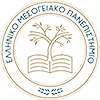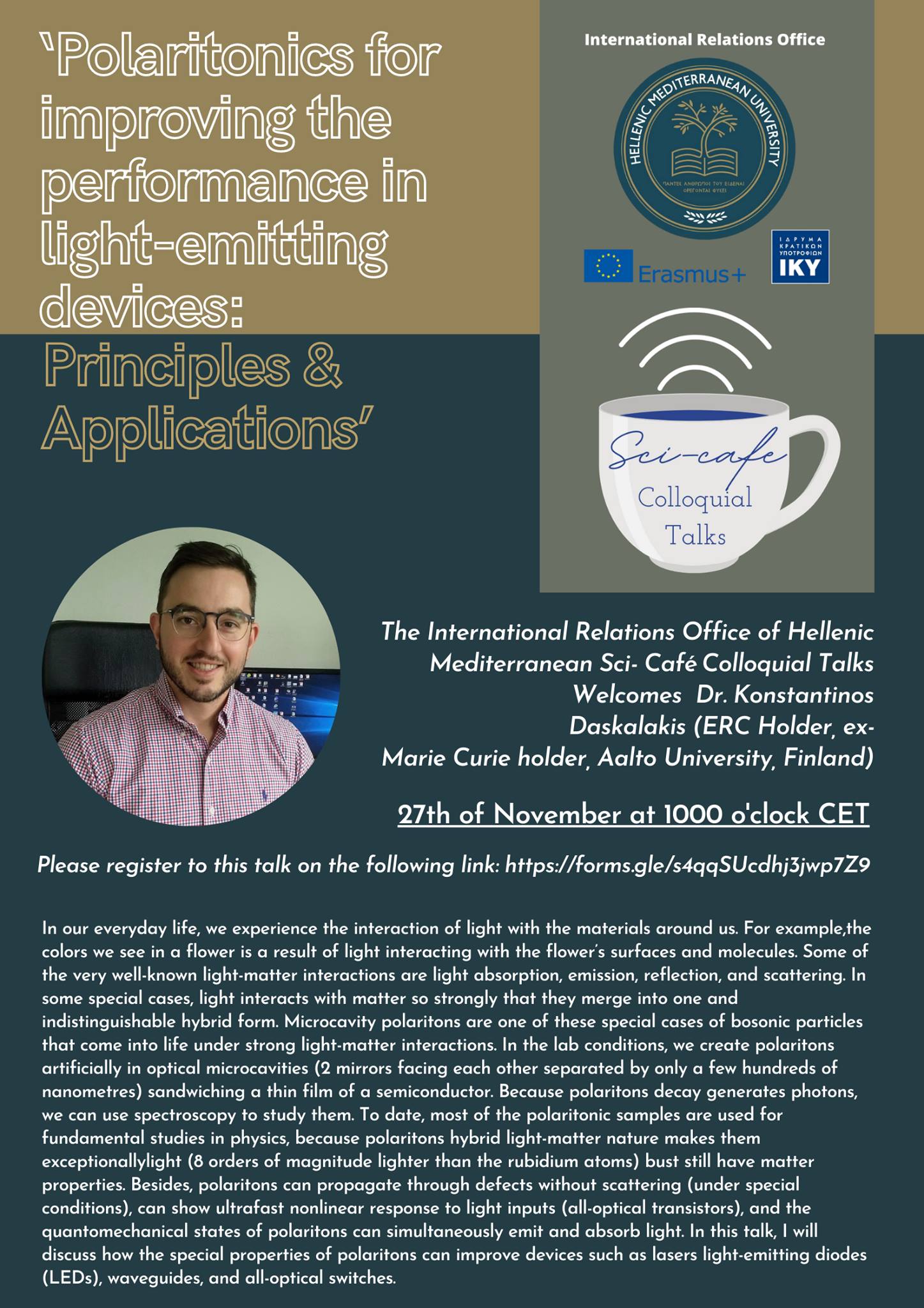Ομιλία Κωνσταντίνου Δασκαλάκη, Παρασκευή 27 Νοεμβρίου, στις 1100 πμ
Στα πλαίσια της εξωστρέφειας του Πανεπιστημίου μας και των δράσεων του Γραφείου Διεθνών Σχέσεων είναι μεγάλη μας χαρά να έχουμε δικτυακά κοντά μας έναν πολύ ταλαντούχο Έλληνα & Κρητικό επιστήμονα, φέτος ανάμεσα στους Έλληνες που έλαβαν χρηματοδότηση απο το European Research Comittee (ERC) – https://www.patris.gr/2020/09/09/diakrisi-gia-kritiko-epistimona-nea-genia-elpida-gia-tin-ellada/?fbclid=IwAR2mQF8kRokYVpxVQWzEMvBeECqv0f16mSN4bmypj3Zbs7bAIUuPdxt9rbo, Κωνσταντίνο Δασκαλάκη (Materials Engineering Department, Turku University, Finland)
Η ομιλία θα λάβει μέρος της πλατφόρμας του zoom την Παρασκευή 27 Νοεμβρίου 2020 στις 1100 το πρωί και χρειάζεται η εγγραφή σας στο παρακάτω link: https://forms.gle/v4YfwTSJHSWqnGDn7
Ο τίτλος της ομιλίας του Δρ. Δασκαλάκη θα είναι: ‘Polaritonics for improving the performance in light-emitting devices: Principles & Applications’
Η περίληψη της ομιλίας του ακολουθεί:
In our everyday life, we experience the interaction of light with the materials around us. For example, the colors we see in a flower is a result of light interacting with the flower’s surfaces and molecules. Some of the very well-known light-matter interactions are light absorption, emission, reflection, and scattering. In some special cases, light interacts with matter so strongly that they merge into one and indistinguishable hybrid form. Microcavity polaritons are one of these special cases of bosonic particles that come into life under strong light-matter interactions. In the lab conditions, we create polaritons artificially in optical microcavities (2 mirrors facing each other separated by only a few hundreds of nanometres) sandwiching a thin film of a semiconductor. Because polaritons decay generates photons, we can use spectroscopy to study them. To date, most of the polaritonic samples are used for fundamental studies in physics, because polaritons’ hybrid light-matter nature makes them exceptionally light (8 orders of magnitude lighter than the rubidium atoms) but still have matter properties. Besides, polaritons can propagate through defects without scattering (under special conditions), can show ultrafast nonlinear response to light inputs (all-optical transistors), and the quantomechanical states of polaritons can simultaneously emit and absorb light. In this talk, I will discuss how the special properties of polaritons can improve devices such as laser light-emitting diodes (LEDs), waveguides, and all-optical switches.

